BLOG/WRITING
The Cambrian Era of Jet Evolution
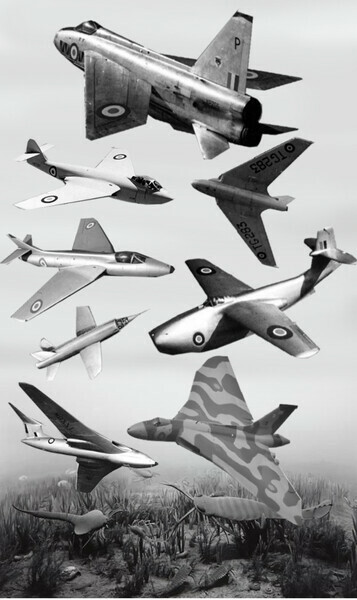
Since childhood I have loved looking at pictures and dioramas imagining the Cambrian Era, and the whole idea of the Cambrian 'explosion' of life forms. As well, I grew up looking at pictures of great British aircraft, particularly jets. (Apologies to Hiroshi Sugimoto who took photos of museum diorama's, including the one above, to which I added what I think might be Cambrian looking jet aircraft).
The Cambrian Era, starting over 500 million years ago, was a period of rapid evolutionary growth and experimentation of (mainly) invertebrate aquatic animal life forms on a planet whose biomass had previously developed little in the way of complex multicellular life. What really intrigues me are the experiments the evolutionary algorithm provided by creating very peculiar complex life forms, many of which, either elegant or bizarre, subsequently became dead ends. I like to imagine the early days of jet aviation, spearheaded by the British after WW2, as somehow analogous to the Cambrian Era. The British, despite careful planning early in WW2 to be foremost in the field of jet technology, lost their edge in the decade after the war to the Americans, so that their innovations and designs became a, sort of, evolutionary spur that under different circumstances might have continued to develop in a Phillip K. Dick style of parallel universe. When, teaching as I occasionally did, I wanted to introduce some interesting looking design traditions to a class, and encourage them to look in strange places for design elements and forms, I'd often give them a quick visual tour of early British aerospace. The British used various recurring design features which look functionally aerodynamic and elegant to my eye, but which have generally been phased out of aircraft production by development and research processes that might be thought of as parallel to evolution. The initial and groundbreaking British design features provided advantages at the time, but not over time; much like the unusual design features of Cambrian life forms.
My interest in Cambrian life forms and early British aerodynamic forms is perhaps fetishistic as a result of early exposure to both subjects in books, and in the case of aircraft, both books and 'Airfix' models; and of course, relentless drawing of these forms. A very early fixation was, of course, the British Supermarine Spitfire, Wartime Britain's top of the line interceptor famed, along with the more pedestrian Hurricane, for winning the Battle of Britain. I can't tell you how many hours I gazed at this form as a young child, anywhere I found it. I fondled my Airfix models affectionately. There has to be a kind of eroticism to such a beautiful form, and I must have been imprinted similar to how I was imprinted with an attraction to the form of the human and, being heterosexual, particularly the female form. Look at the beautiful thin monocoque 'elliptical' wings of the aircraft below, which gave it superb speed and handling. It's slippery and fluidly dynamic movement through air was a cue to other British prop aircraft like the de Havilland Mosquito (not shown) but more importantly, for the shape of the faster moving new airborne objects the jet age.
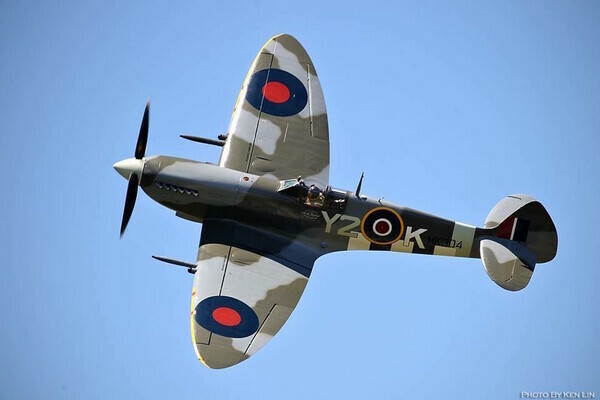
Spitfire; Photo for the Comox Valley Record by Ken Lin. Looking at this photo gives me unfathomable pleasure, of the kind I used to enjoy holding my Airfix model spitfire and imagining it moving through space. In doing so, having it turn, roll, dive and climb, I viewed it from every conceivable angle. I don't believe visual memory is photographic, but that repeatedly imprinting forms on the brain creates mental templates which allow you to reconstruct the form or derive other forms from it. This is akin to life drawing for years and years perhaps, which creates biomorphic imprinted templates of form, in the same way that viewing and drawing the spitfire from multiple aspects/angles might create aerodynamic templates.

The Miles M.52, Britain's attempt to be first to break the sound barrier with an air breathing jet and fly at 1,000 mph. Developed during the later stages of the war, design work was complete and three prototypes were being built before the end of hostilities. The design had the first 'all flying tail' to prevent loss of control due to compression at high mach speed. But Britain was financially devastated by the cost of the war and the project was cancelled before any maiden flight. Much of the data and design work that had accumulated was passed to the Americans for their rocket propelled Bell X-1.
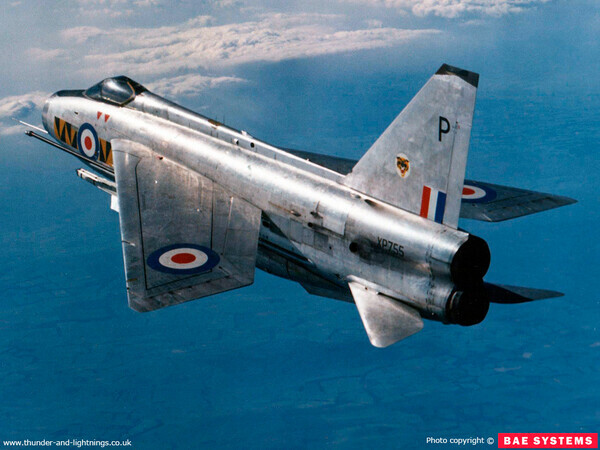
The English Electric Lightning interceptor with an unusual stacked engine design and gorgeous wing structure that seems something between a delta and highly swept conventional wing. The aircraft had outrageous performance rising to high altitudes in order to intercept Russian bombers should an end-of-the world scenario occur. In it's role as an interceptor, it might be thought of as a successor to the Supermarine Spitfire, and the evolutionary design and technology changes between the earlier aircraft and the later took place over a mere 20 years.
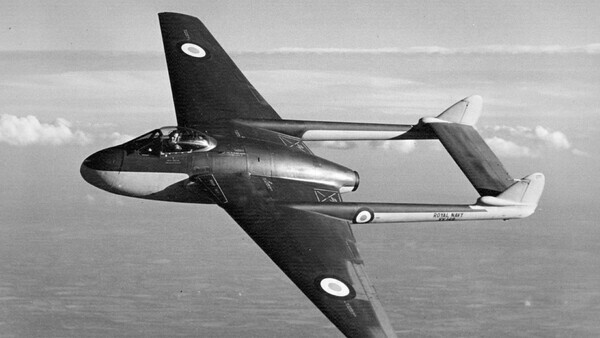
DeHavilland Vampire; this jet was available to the UK before the end of the war but they went with the two engined Gloster Meteor. Both were fairly conventional designs in terms of air frame, although DeHavilland went with wood as the primary material as they did with the Mosquito. Such lovely organic aerodynamic shapes.

Based on the Vampire, the de Havilland Swallow was an experimental design which explored a tail less design as proposed originally for the developing de Havilland Comet airliner. Instability at mach speed caused buffeting and disintegration and the death of Geoffrey de Havilland Jr., test pilot and son of the company founder.
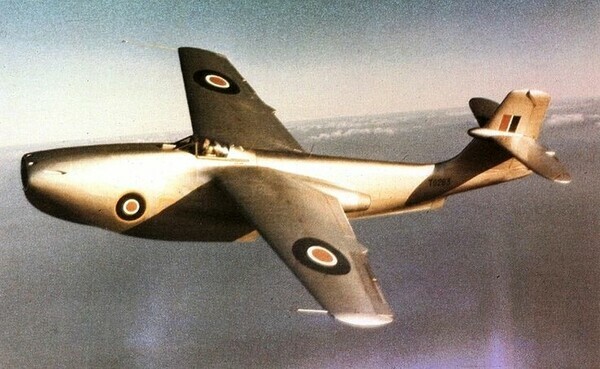
The first jet powered water based aircraft was the experimental Sanders-Roe SR A/1. Less novel at the time than it might seem today, because of the pre-war development and use of fast sea planes, it could nevertheless not compete in terms of speed and performance with land based jet fighters and was eventually scrapped.

As Cambrian as it can get, above, and below, the astonishing Handley Page Victor doomsday bomber, the British equavillent of the B-52. The Victor's gill-like air intakes at the base of the wings look spookily alien. Notice how many of the British Cambrian Era jets have interesting and complex wings with their engines and engine air intakes buried in the wing roots. Including the Comet airliner. This made great aerodynamic sense but made servicing difficult and also, in the event of an engine disintegration, the risk of hull and wing structural damage. The Americans, as had the Germans with their jet fighters, put their engines in pods under the wings which was more practical, but less beautiful, less aerodynamic, and less Cambrian. The Victor also had a beautiful Crescent Wing (see below); not the first use of the wingform, but an exquisite example and it made the jet slippery and fast in the air. In a shallow dive it broke the sound barrier and apparently handled beautifully at slower speeds of take off and landing.
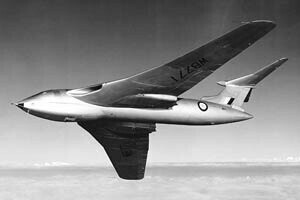

The Avro Vulcan, another of three Britain's 'V' Bombers. Harkening back to the DeHavilland Swallow with it's delta wings and wing root engines and intakes, the ogee shape in the leading wing edges looks ahead to the superb looking wing on the Condord.
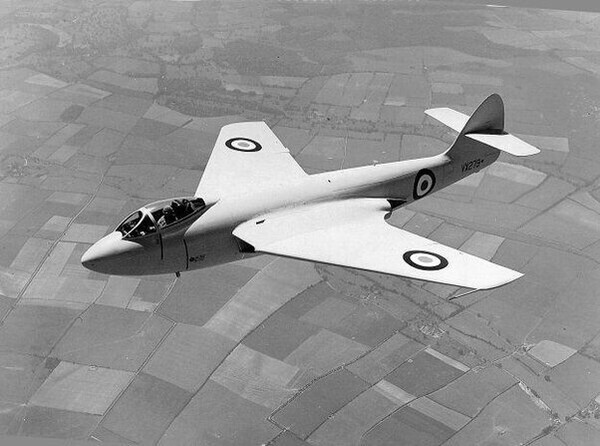
The Hawker P.1052, a prototype for development of later British swept wing aircraft. Again the engines and intakes are in the wing roots, creating a beautifully balanced looking aircraft which contributed to the tremendous Hawker Hunter.
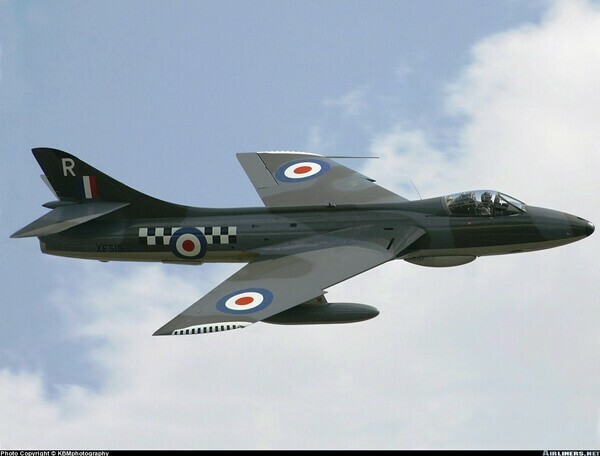
The Hawker Hunter, still a superb looking jet intercepter to this day.
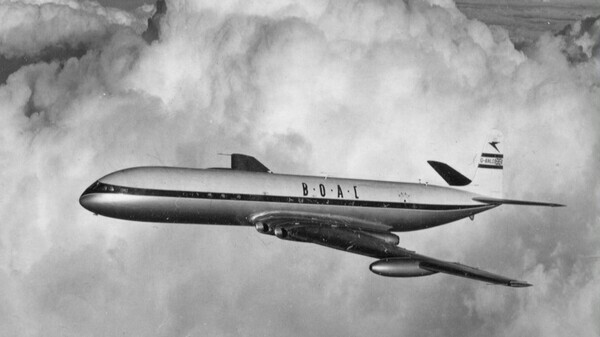
The DeHavilland Comet. The worlds first jet airliner to take flight. Look at that beautiful nose; the wing area seems huge in plan views, perhaps evidence for it's original delta winged concept design. The tail assembly looks old fashioned and slapped on alas, and worse still, despite extensive and unheard of levels of development to prevent metal fatigue, after a few years Comets began to break up in flight. A years long, again unheard of, effort to locate the flaws ensued, and after successfully solving the issue the Comet again took to the air. But too late to capture the intercontinental air travel market. The Boeing 707 had by then become the state of the art air carrier and Britain lost it's post war bid to become a major player the civilian aircraft market.
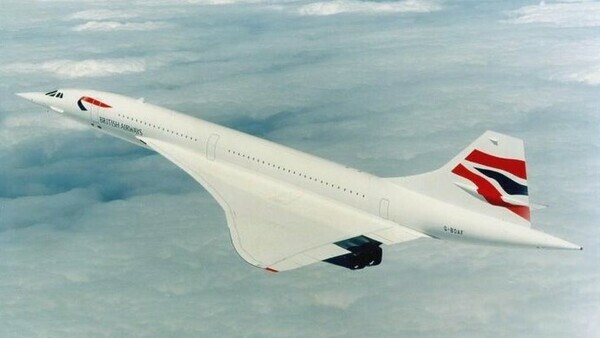
The Concord. I remember watching the maiden flight on the telly, and being disappointed the stalky looking landing gear wasn't retracted. One of the most exquisitely shaped objects ever conceived and constructed, a British/French joint venture. The ogee curved wing, a lovely lazy 's' curve that I've always loved in figurative art or design and architecture allows the required superb aerodynamics required for speeds above that of sound. Ironically it was ground breaking husband and wife aerodynamicists of German origin, pillaged after the war, Joanna Weber and Deitrich Kutchemann who were the senior wing designers who brought a lot of the research data to the Concord team. Joanna Weber was responsible for the lovely crescent wing on the Handley Page Victor pictured above, and if I recall correctly did work on the Comet as well. Elliptical, crescent or ogee; the British might not have been responsible for discovering these wingforms, but they applied them superbly in their aircraft, along with other novel aerodynamics worthy of an era that was a Cambrian explosion of sorts in jet aircraft design. Many of the unusual forms became evolutionary dead ends, outflanked by American pragmatism but gorgeous to look back on nevertheless, seeds for a fictional alternate history in which the British Empire and British inventiveness might have continued to play a role in world affairs.